How can I find a maple tree to tap?
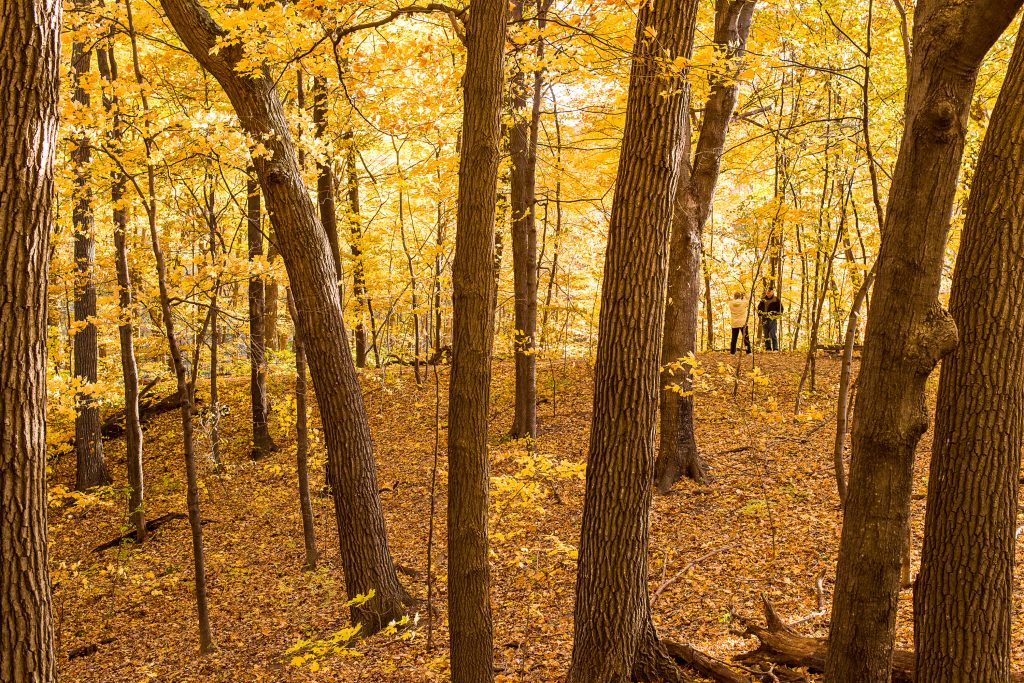
If you want a taste of maple syrup, your first stop might be the grocery store or the Arboretum Gift & Garden Store. But what if you wanted to make your own? The first step would be finding a sugar maple tree. Here is one way you can try.
Step 1: Be in a Place Where Maple Trees Grow
Sugar maple trees grow in the northeastern United States and Southeastern Canada. On the map, the green parts are places where sugar maple trees grow. This includes the eastern part of Minnesota where the Arboretum is located.

In the future, sugar maple trees might not grow in the same places. Scientists predict that climate change will make places farther north better for maple trees. This means that there will probably be fewer maple trees in southern Minnesota 100 years from now.
Even within the northeastern United States, sugar maple trees do not grow everywhere. They have their favorite places to grow. Maple trees grow best in rich, moist, well-drained soil and on hillsides. They do not grow well in places where road salt or lots of traffic compact the soil.[1]
You can also find maple trees on the edges of old pastures and in neighborhoods because people like to plant them!
Step 2: Look for Maple Leaves and Helicopter Seeds
The easiest way to decide if a tree is a maple tree is to look at its leaves and seeds. Maple trees have pointed leaves that look like hands.
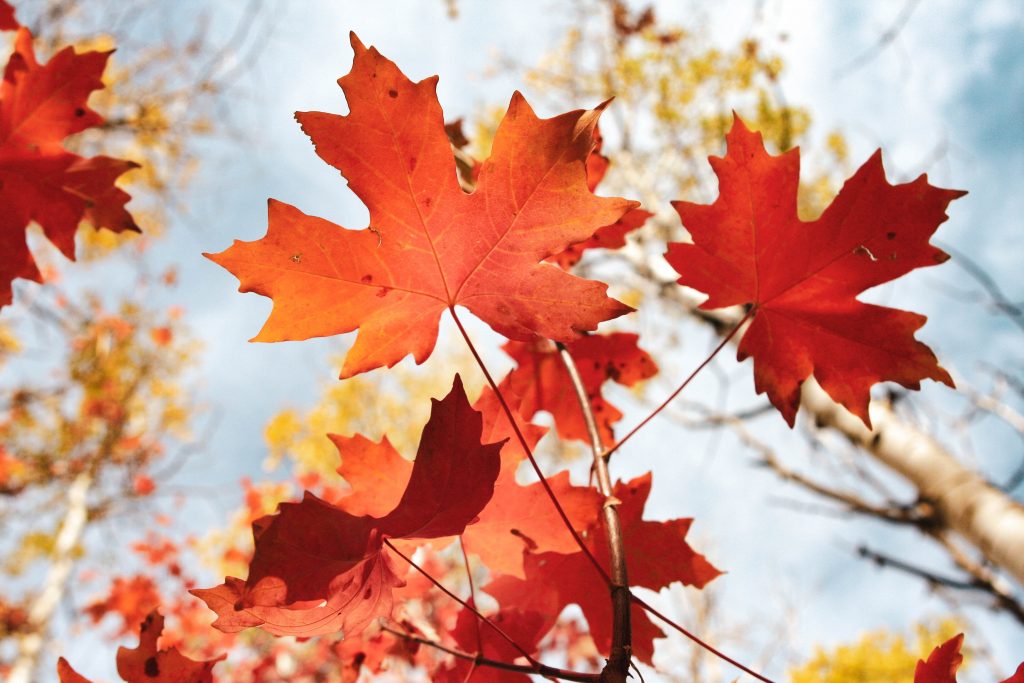
A maple tree also has seeds that look and fly like a helicopter. Plant scientists call them samaras.
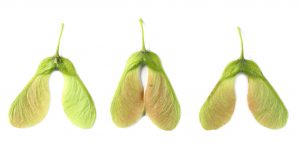
Try it out yourself! Can you spot the maple leaves? Click on all of the maple leaf images below. Scroll down for more and to see how you did.
Now, the only thing that is left is for you to go outside and find some maple leaves and seeds, and they will lead you right to the maple tree…except there is one problem, isn’t there? Trees do not have any leaves during March, and that is when the sap is running.
If you plan ahead, you can tie a ribbon around your maple trees or write down where they are in a notebook so you can remember in the winter when they do not have any leaves. There are other ways to identify a maple tree if you have not done this yet.
Step 3: Look Closely at Tree Branches and Bark
Maple trees have opposite branches. This means that their buds and branches come in pairs. If you look closely, you will notice that maple branches have a partner on the other side of the branch. Most kinds deciduous trees (the ones that lose their leaves) in Minnesota have alternate branches and buds. This means that they take turns. First the buds are on one side of the branch, and then the other.
You can compare these two kinds of branches in the drawing below. The maple branch is on the left. It has opposite branches and buds. The branch on the right has alternate buds. It is a linden tree.
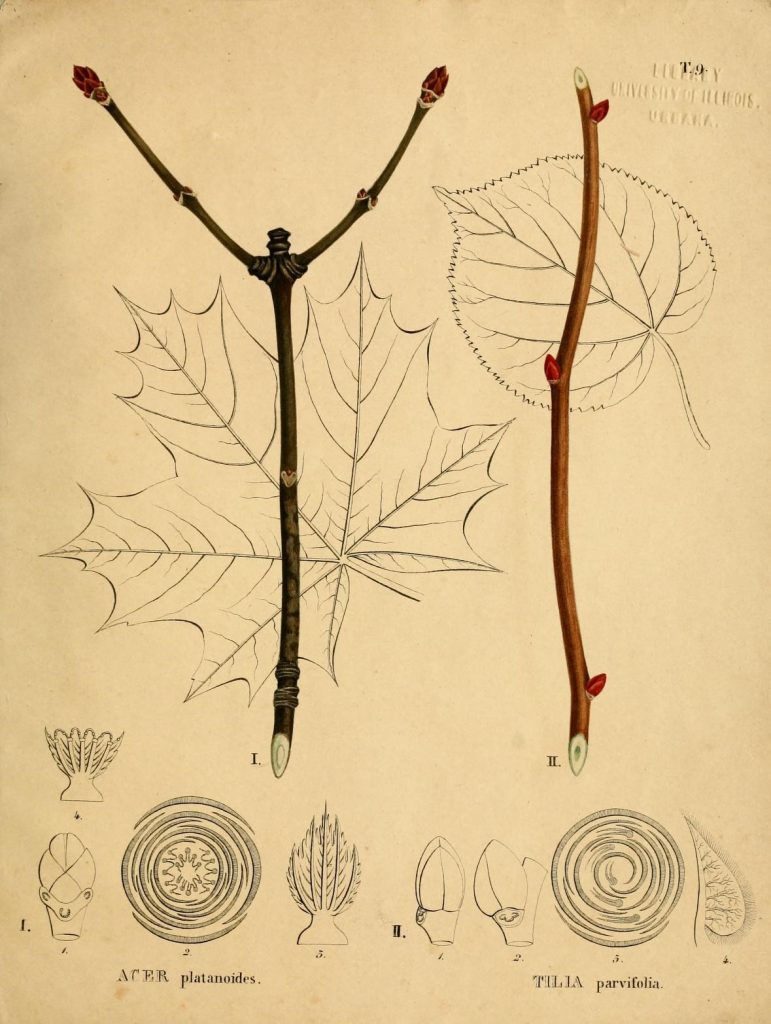
If you find a tree with opposite buds and branches in Minnesota, you can be nearly sure that it is one of these trees:
- M – maple
- A – ash
- D – dogwood
- Buck – buckeye
You can remember these with the phrase – MAD Buck trees.
Let’s practice. Which of these twigs have opposite buds and branches?
So now we know that if a tree has alternate buds, it is not a maple tree, but how can we tell if a tree is an ash or a maple?
Ash trees have thick twigs with round stubby buds. Maple trees have thinner branches with pointy buds. Maple twigs also have a reddish brown or light brown color, and they have dots that make them look like pretzels. Those dots are called lenticels. They are small holes in the twig that allow air to come in and out, sort of like breathing.
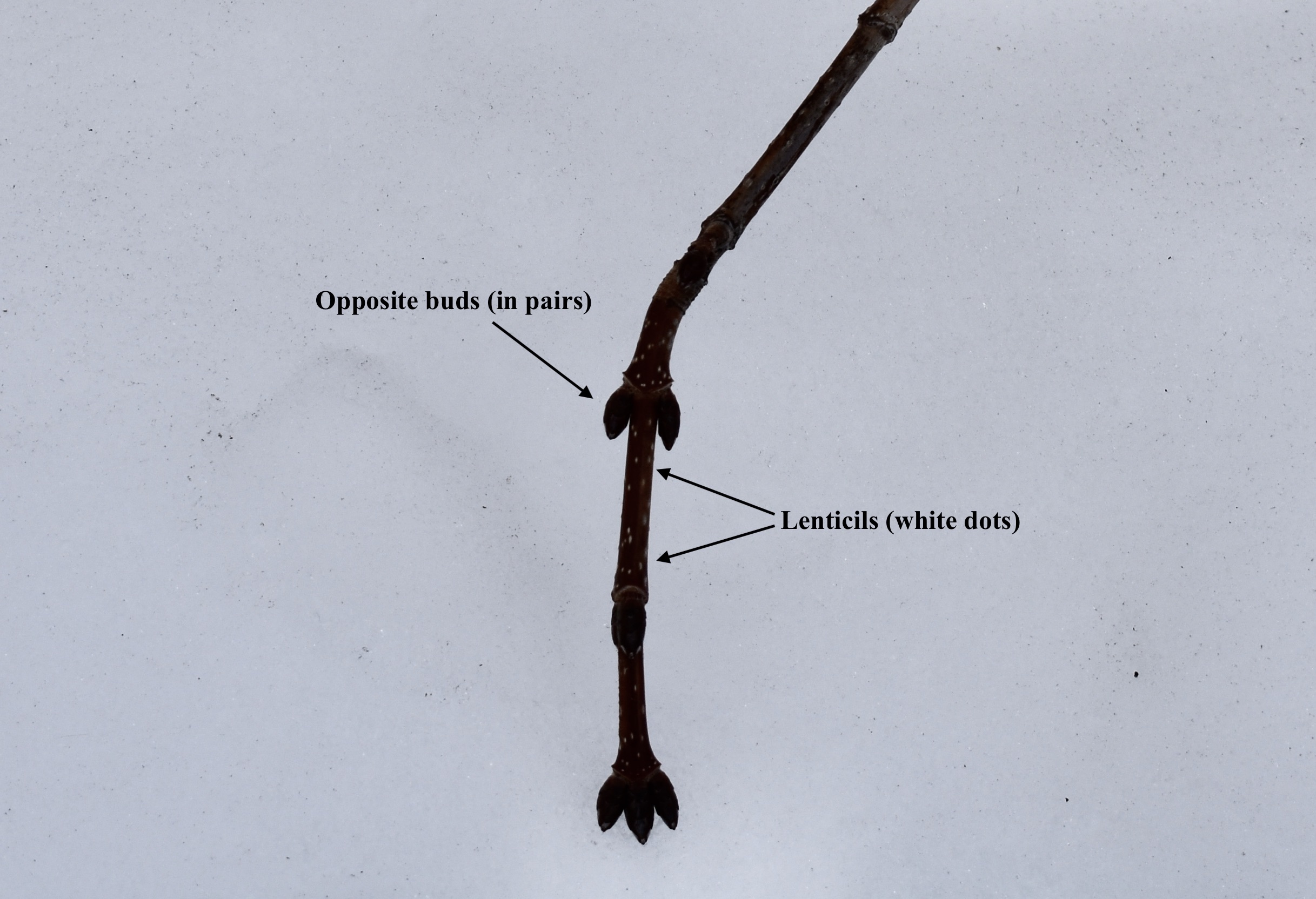
Maple trees and ash trees also have different kinds of bark. An ash tree will have bark with ridges that make a diamond shape. Mature sugar maple trees have shaggy, lighter colored bark. Here are some examples:
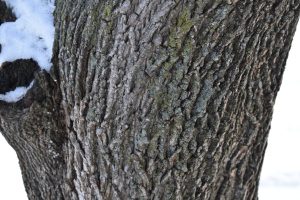
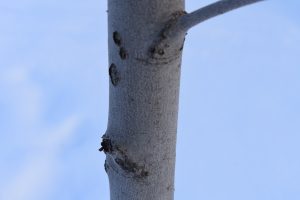
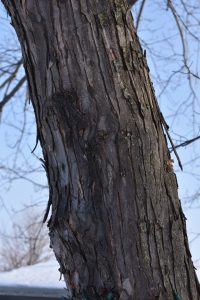
Identifying trees by their bark and twigs can be kind of tricky! You’ll have to look closely to decide if it’s the right kind of tree for collecting sap.
Step 4: Decide The Tree Is a Good One for Tapping
Once you have found a maple tree, you still have to decide if it is a good idea to put a tap into the tree to collect its sap. We have learned that tapping a tree does not hurt it as long as it is big enough and healthy. You can check to see if your tree is healthy by looking up! Is your tree missing bark? Does it have a lot of broken branches at the top? If the answer is yes, you should pick a different tree. This one will need all of its sap to try to keep itself happy.
There are also guidelines for how big a tree should be before it is tapped. Tree scientists measure trees at 4 1/2 feet above the ground. They suggest that a tree should be at least:
- 10 inches diameter (across) for 1 tap
- 20 inches diameter for 2 taps
- 25 inches diameter for 3 taps
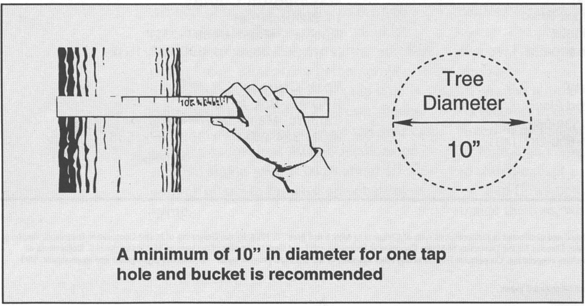
It is difficult to measure across the middle of a tree without cutting it down, so we often use a tape measure to measure the circumference of the tree instead.
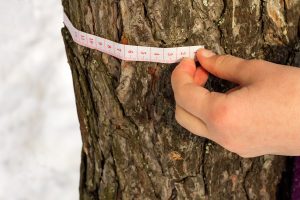
You might be familiar with a formula that can help us figure out the diameter of a tree once we have its circumference.
Circumference = 3.14*Diameter
Circumference/3.14 = Diameter
Let’s try it out! Imagine you measured around the circumference of the maple tree. Solve the equation to figure out whether your tree’s diameter is large enough to tap the tree.
Here’s a helpful chart that includes both circumference and diameter. It will let you know how many taps you can safely add to your tree.
| Diameter in inches | Circumference in inches | Number of taps |
|---|---|---|
| 10 – 20 | 31 – 63 | 1 |
| 20 – 25 | 64 – 78 | 2 |
| 25 + | 78 + | 3 |
Congratulations! You’ve learned how to find a maple tree that you can tap to collect maple sap. This makes me wonder why maple trees make sap at all. And, if I tap the wrong kind of tree, will I get any sap at all? Will it taste good? Check out the next section to find out!
